Suzuki GSX-S1000GT Review
Suzuki Panorama GT Revew by Vicko – Images RbMotoLens
Once upon a time in a galaxy far away, sports bikes ruled supreme. They were the only way to go quick. And if you weren’t on a sports-bike, you were on a sports-tourer which was the next best thing and a little more practical. Chances are that if you didn’t have something like a Gixxer or Blade in the shed, you had a VFR because both categories sold by the metric boat load. Fact was – if you wanted serious performance, they were really the only option.
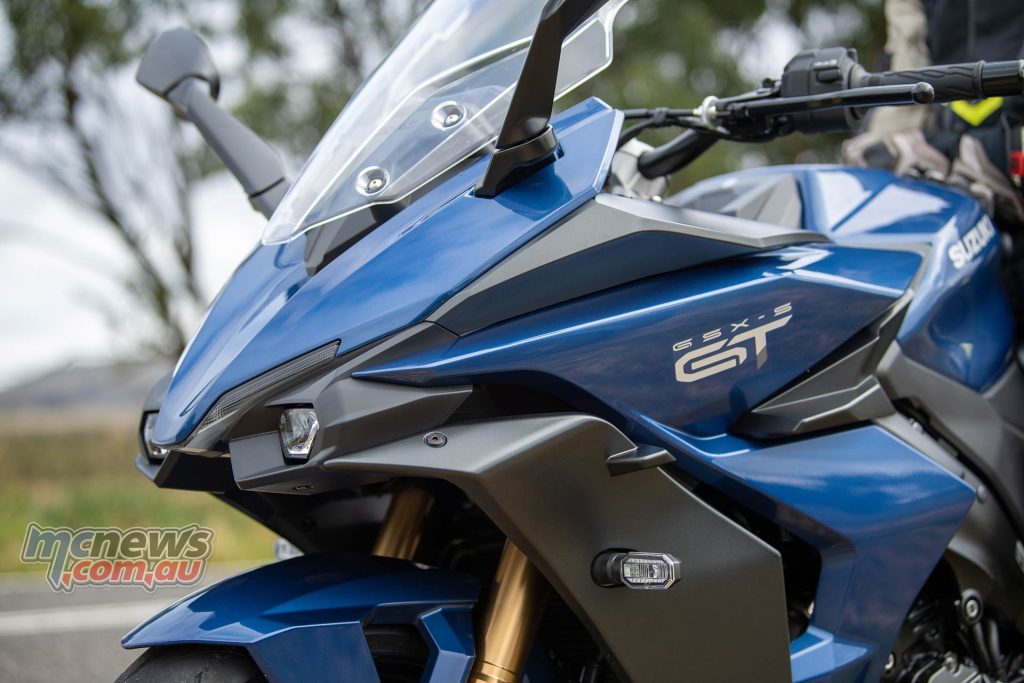
Then somewhere along the way.. sports-bikes evolved further and further towards track performance and started becoming less practical on the road. At the same time horsepower outputs were steadily rising across the board, so serious performance was now available in other segments… Sports-bike sales declined. As did sales of classic Sports-Tourers. Adventure bike sales boomed. Comfortable, capable, more versatile and still pretty quick, the modern adventure bike was a tough act for sports-tourers to stand up against as the trend to ‘go bush’ (or at least have the option to), took hold.
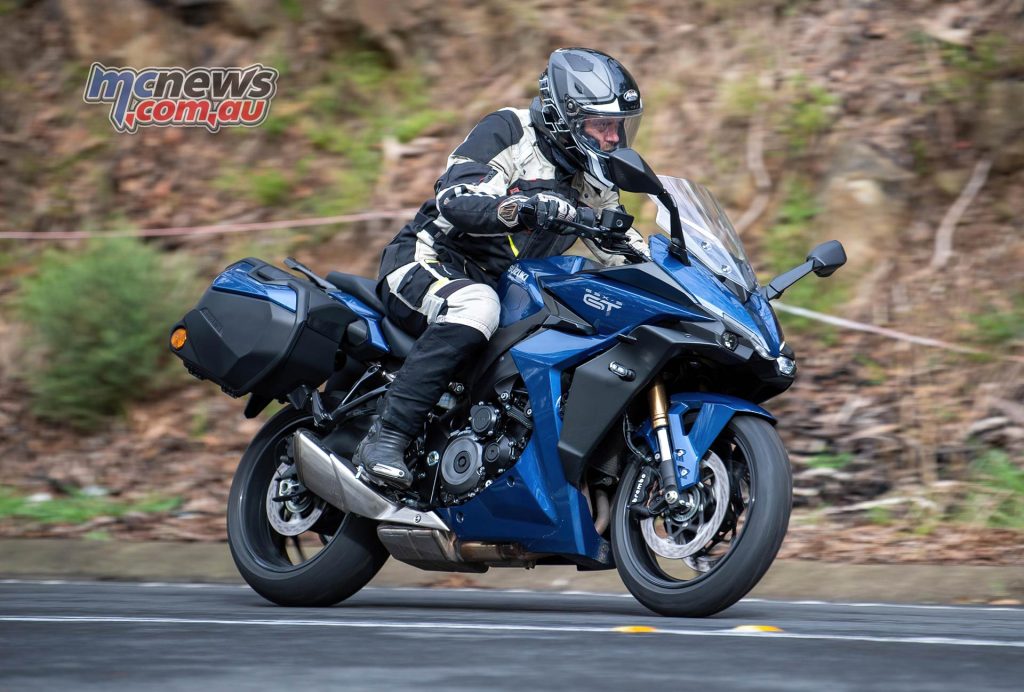
But have we lost sight of something special? The Yamaha Tracer GT for instance is a great bike and I think hugely underrated. Is the Suzuki GSX-S 1000 GT another gem flying under the radar? I had a week to find out and the bike I was on Suzuki Australia have dubbed the ‘Panorama’, which is essentially a GT plus luggage, but without any more acronyms….
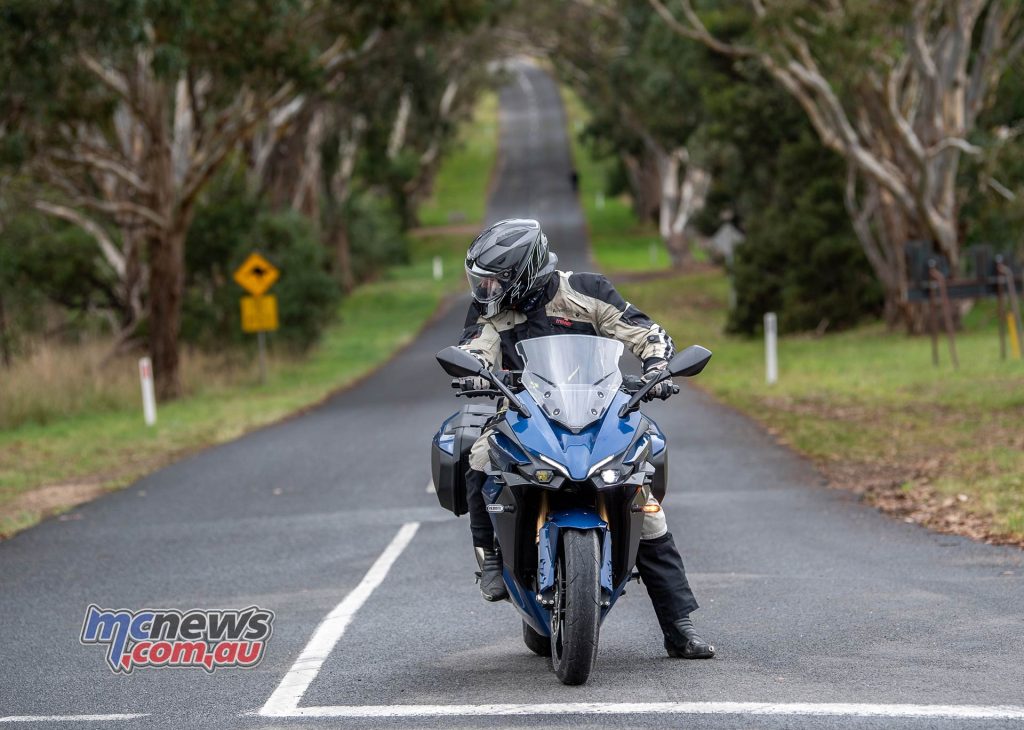
In their words….
‘Named after the famous Mount Panorama racing circuit in Bathurst NSW, the Panorama GT is a special edition model pays homage to one of Australian motorsport’s most picturesque, bucket-list circuits. Equipped with the Genuine Suzuki 72L side case set with matching colour garnish as standard fitment, the Panorama GT is ready to go the distance.‘
Now a week isn’t a huge amount of time to get to know a bike well. Throw in wet Victorian roads, hand numbing cold and gale force winds into the mix and it gets tougher. But I did get to form an impression.
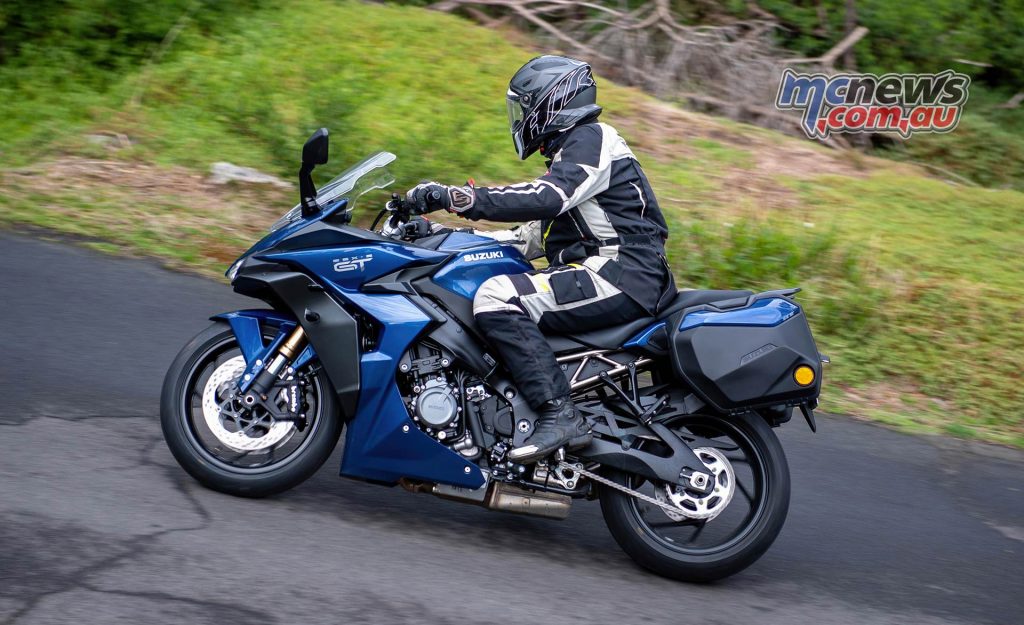
Let’s start with a quick scan of the brochure:
- It’s centred around a 1000 cc in-line four-cylinder pumping out a meaty 150 Hp and 105 Nm
- Wrapped in a sporty twin-spar alloy frame with a stylish trellis subframe – all up tipping the scales at 225 Kg
- It has a six-speed box with quick-shifter, ABS, three ride modes, a 19 L tank
- Touring ability comes care of a generous fairing for good weather protection and comes with decent pillion comfort and colour coded side panniers with 72 L capacity,
- And integration in the form of mobile phone integration for nav, phone and music
So it’s got a bit going for it…
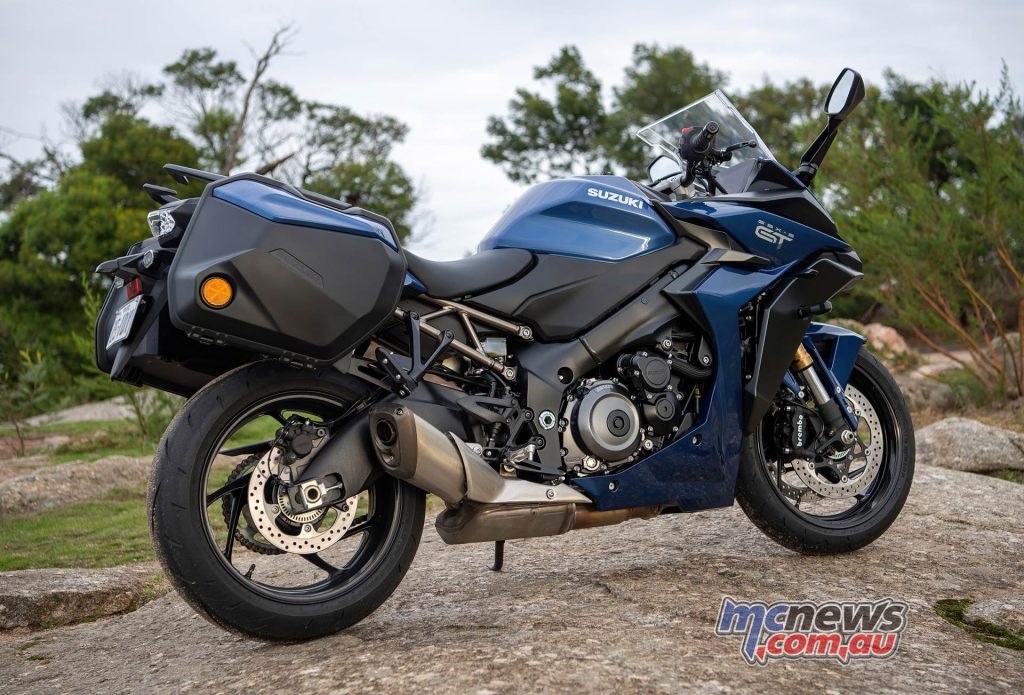
Styling-wise, I reckon it looks the part. Certainly it’s a photogenic thing, but in person it’s even better and seems well resolved from every angle. The styling is aggressive without being over the top – and the panniers are nicely integrated. And that blue is a winner.
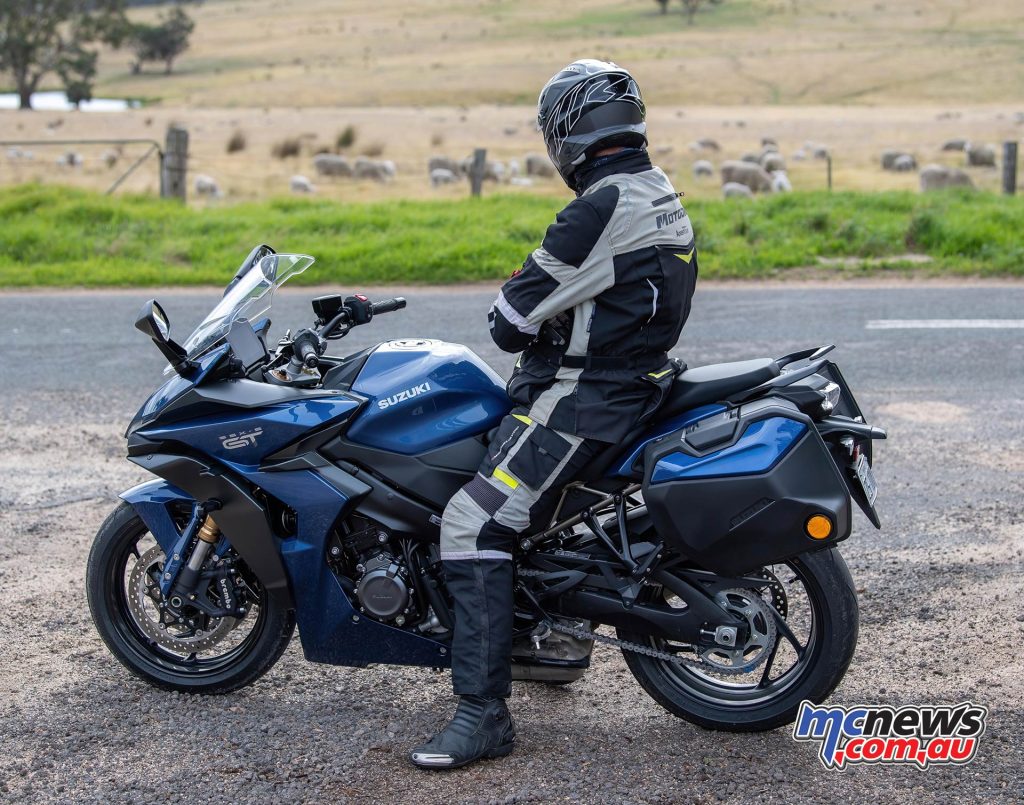
Throwing the leg over you immediately notice the seat height is nice and low and the seat to leg ratio is sporty. It’s not ankles under your butt type stuff – and after a few minutes it was barely noticeable. But it stood out when stepping off my Adventure bike. That’s the thing about first impressions sometimes being misleading. We’re all biased to what we’re used to.
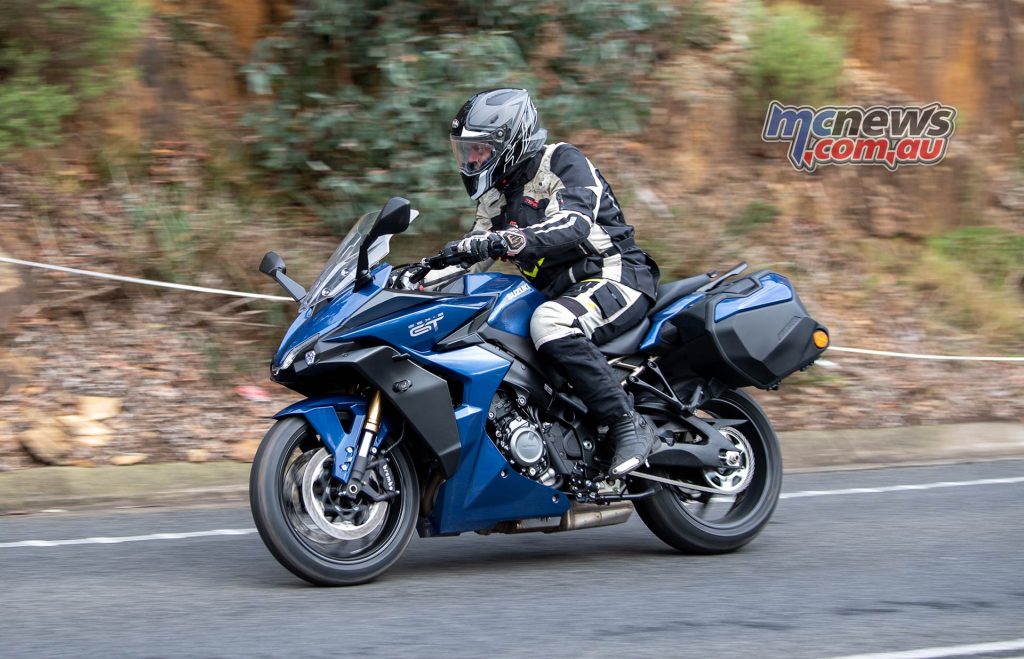
Bars are nice and high and comfortable. They sit 23 mm wider and 14 mm closer than the previous model, with those changes being focused on increasing rider comfort. So the seating position is nice and upright – its not boy racer that requires you to be leaning over clip-ons.
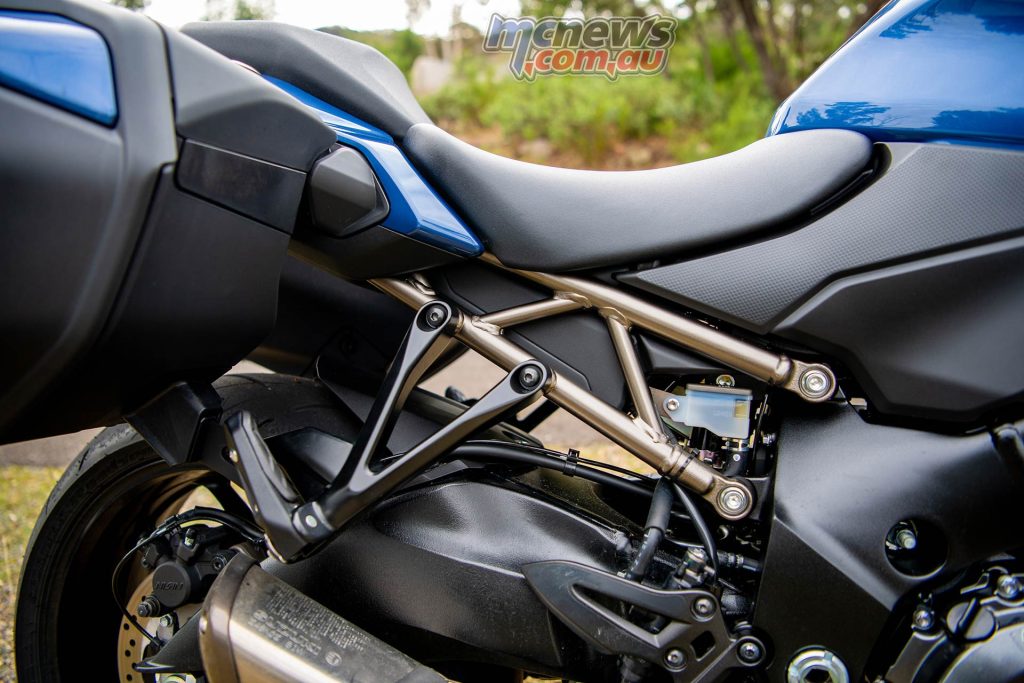
The seat is comfortable and heavily sculpted, so much so that it stops you sliding your butt back as the pillion seat sits on a higher plane. But it’s roomy enough and all nicely finished. The pillion also gets some good quality grab rails, so they’re well catered for. And that lovely looking trellis sub-frame offers ample additional tie-down points for solo luggage.

The screen is generous and offers plenty of protection, somewhat reminds me of the old double-bubble screens that I used to put on my sports-bikes.
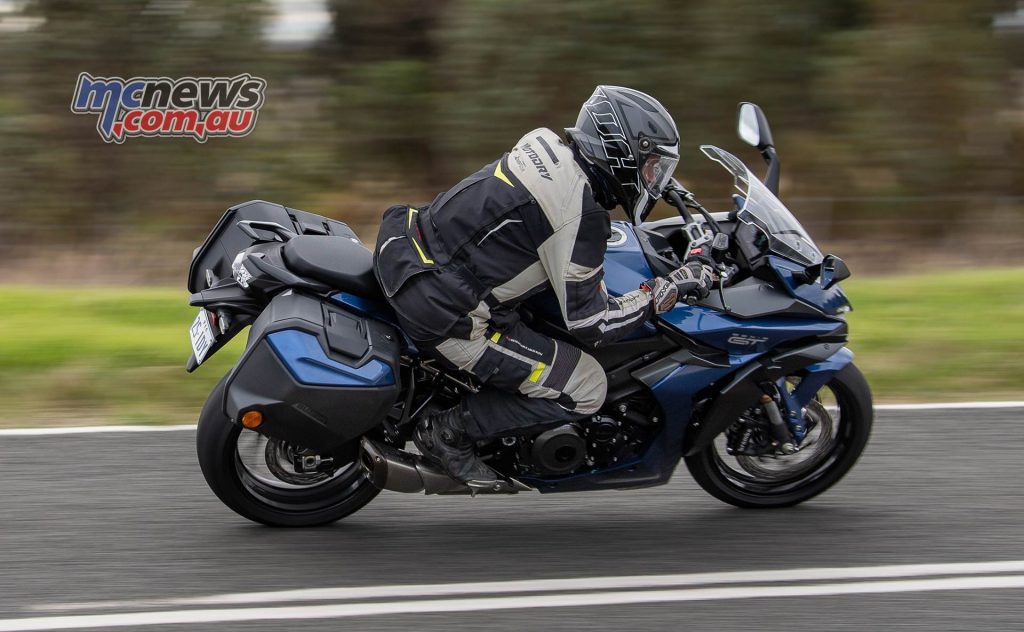
On the go you’re struck by the fact that as an overall package it’s so, so incredibly smooth. All the controls are faultless. From the clutch, brake and gear shift to the throttle. It’s dead simple to ride and well dialled in – that low seat height helping to manoeuvre through traffic with ease. The quick-shift is also a lovely thing – in both directions.
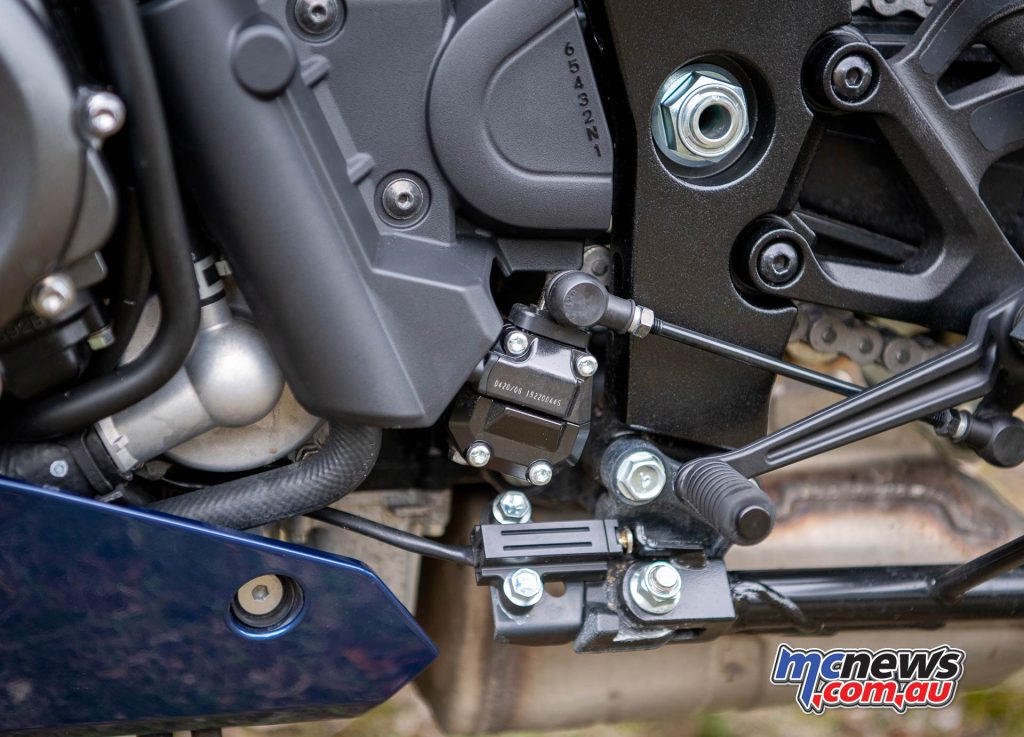
But the standout is the engine which is flexible beyond belief. The bottom end and mid-range are just magnificent. Even off idle it’s able to pull pretty much any gear at any speed without protest. It seems at home in any scenario, commuting, highway hauling as well as more spirited riding. It just gives and gives. The mid-range is so strong that there’s barely any of that typical top end rush of an old school in-line four, it’s just solid, even powering forward comfortably from the basement under 2000 rpm. Lovely. It feels like more than 150 horses if I’m honest. I’m surprised by that figure. They’re certainly healthy ponies… But then Suzuki does claim a quarter mile time of 10.15-seconds and improved torque throughout in this new Euro5 guise when compared to the previous generation GSX-S machines.
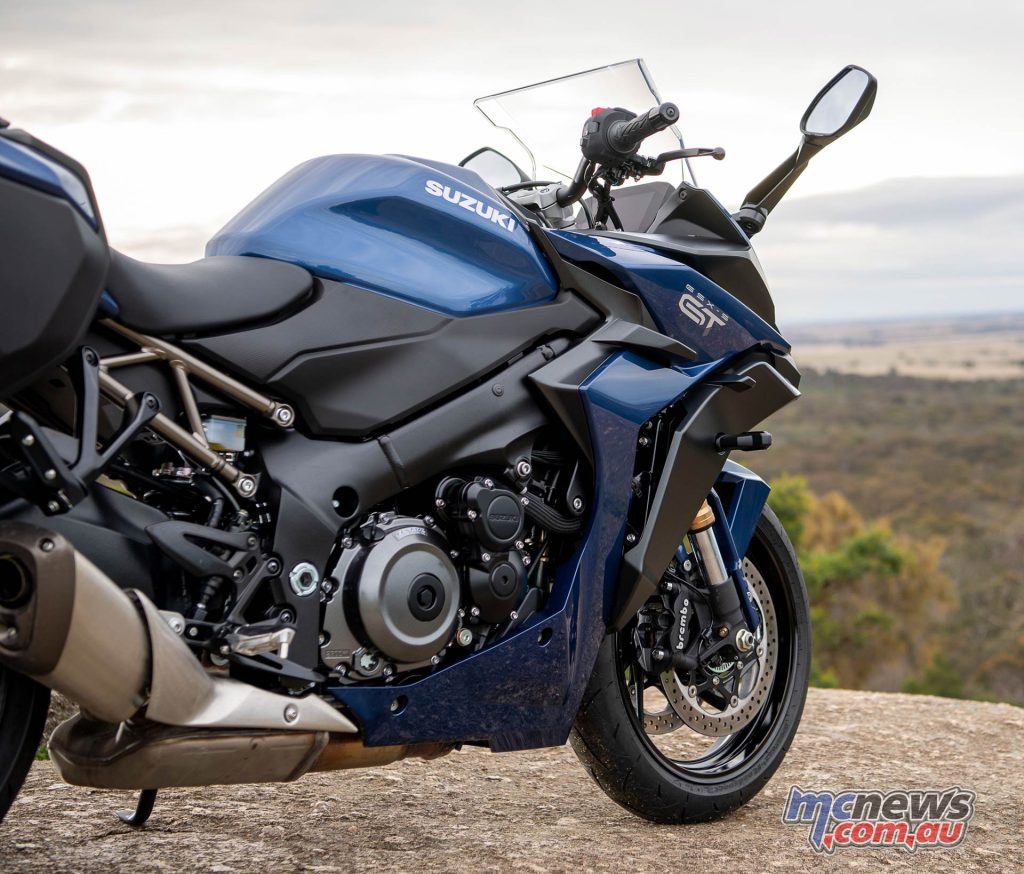
Observation wise – I did notice that it does seem to trip the thermo fan on pretty early in traffic though even during cold weather – so it’d be interesting to see how it would go on a hot summer’s day drawing on the battery, that said, this bike was new and right. I did notice it would have a little mechanical noise for a few seconds on start-up before the oil found its way everywhere – but those are about as close to any faults that I could find.
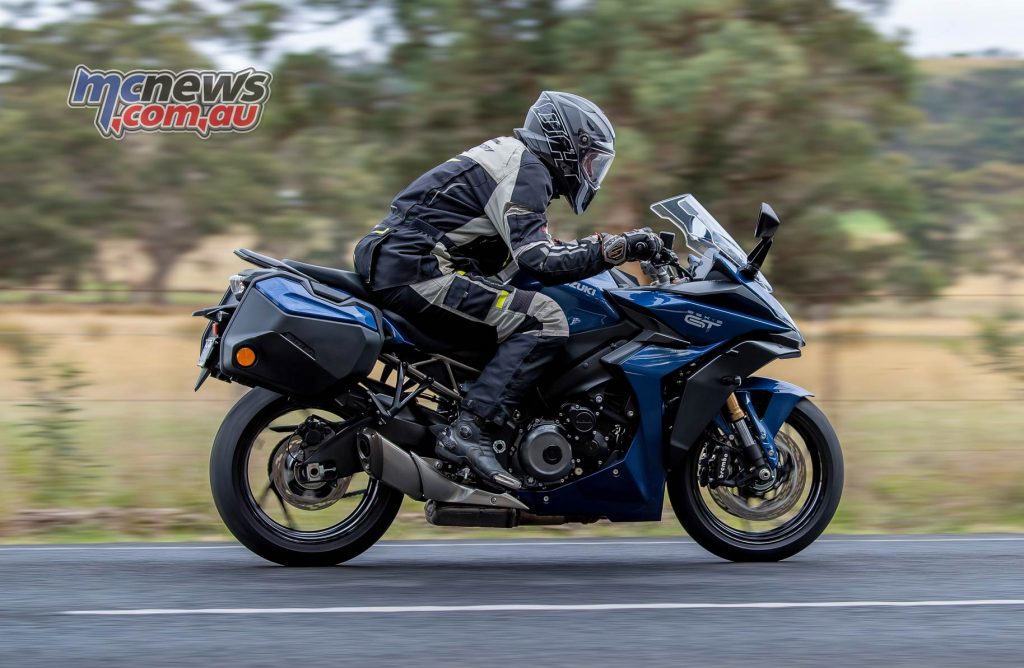
Ride modes are a simple A, B or C affair. A being full power with the most aggressive throttle response, B being a slightly softer throttle while still having full power, while C dialled the power back down for what is essentially a rain mode. A was a little too snappy for me and I was pretty happy with B for all weather.
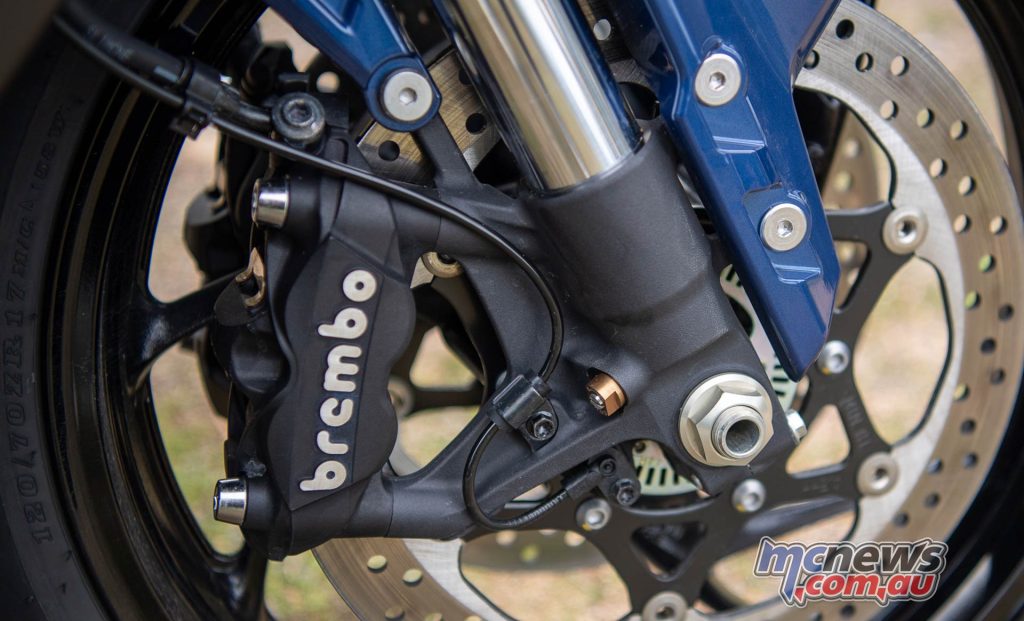
In terms of rider aides, the traction control and ABS both seemed to work flawlessly. Those Brembo Monobloc brakes are industry benchmarks and haul it back to a stop effortlessly from repeated higher speed runs with no signs of fade. Plenty of power and the bike was super stable under full emergency stop conditions.
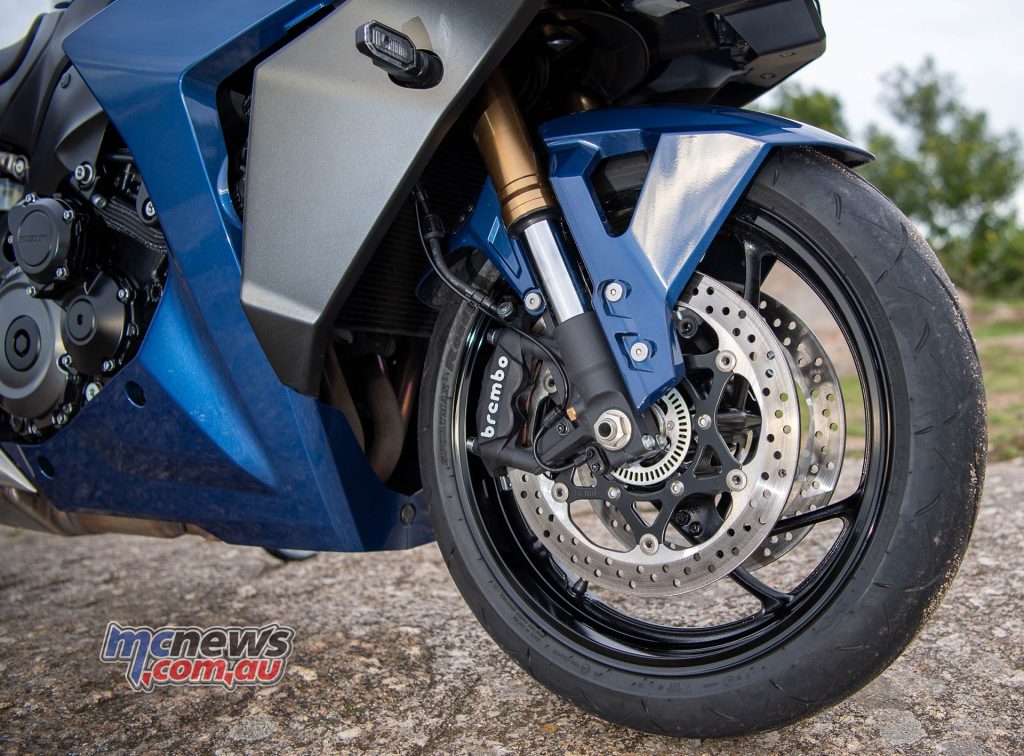
There were a couple of minor things I thought could have been tidied up though. And they’re mostly between your hands. I had an issue with the indicator switch-gear in that the toggle for setting and resuming cruise control got in the way every time I went to turn on the left indicator. My chunky winter gloves would tag the cruise control toggle nearly every time which was a bit annoying.
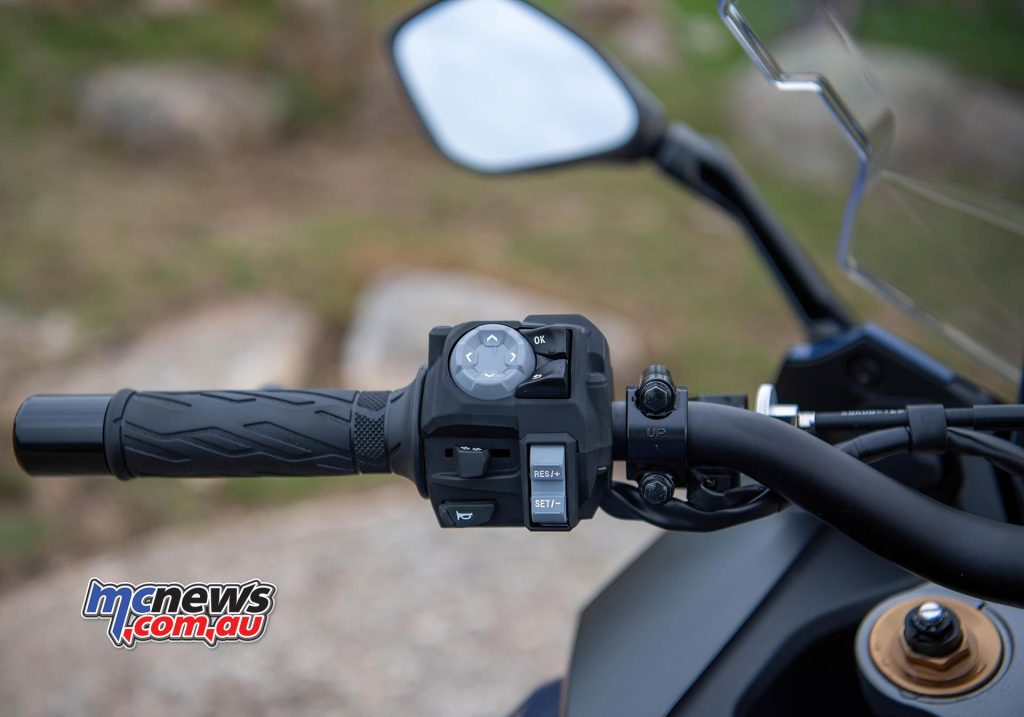
And then my designer brain has some issues with the dash. Which has an overly styled right hand side block that Suzuki riders will be familiar with, but other riders might scratch their heads at. Acronyms and codes abound.
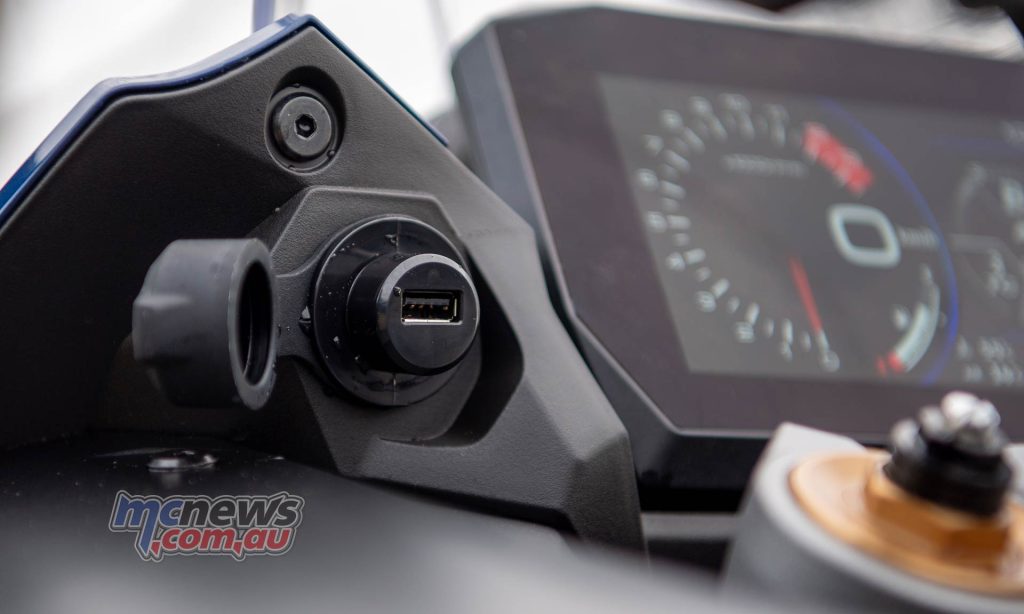
Example? Instead of simply displaying Mode: Sport/Road/Rain – it shows SDMS: A/B/C. It’s not because it doesn’t have room. It’s just, unnecessary… Suzuki do seem to be historically infatuated with Acronyms. Not sure if you noticed that ‘SDMS’ has just as many letters as ‘Mode’… anyway. The bike can integrate with your smartphone to provide navigation and can be controlled via the switch-gear, we never got to play with that side of the feature list.
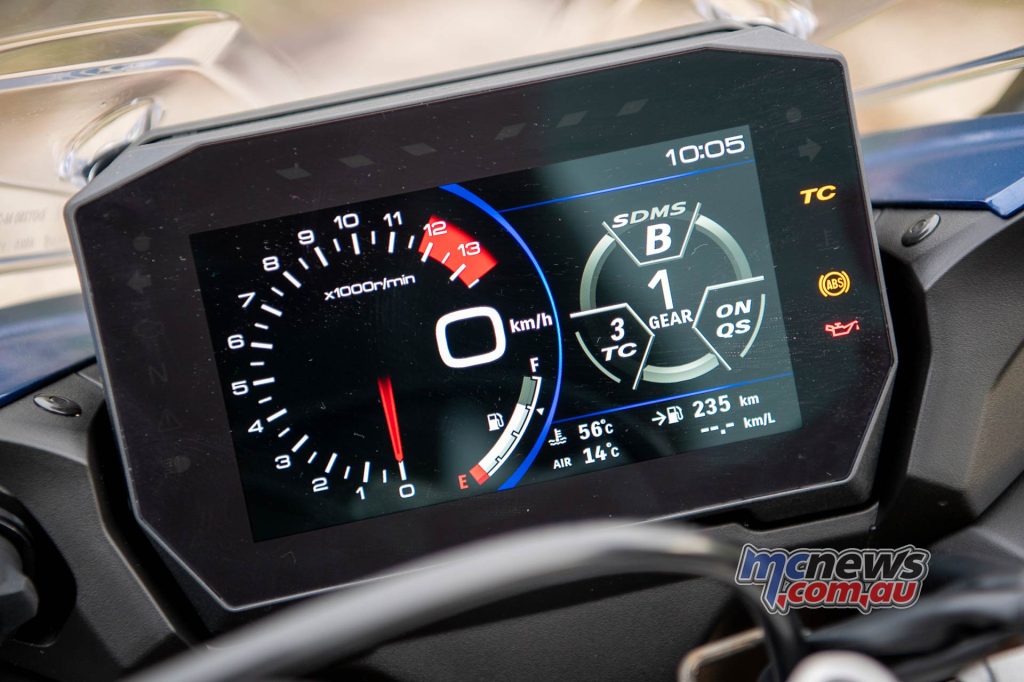
The last thing I’d want to change is the headlights, they are strong enough but overly tight in their beam throw. In a straight line they’re ok, but tip over into a corner – like turning at an intersection – and your lit-distance shrinks to less than ten metres. Which in an unlit rural intersection is not really enough in my mind.
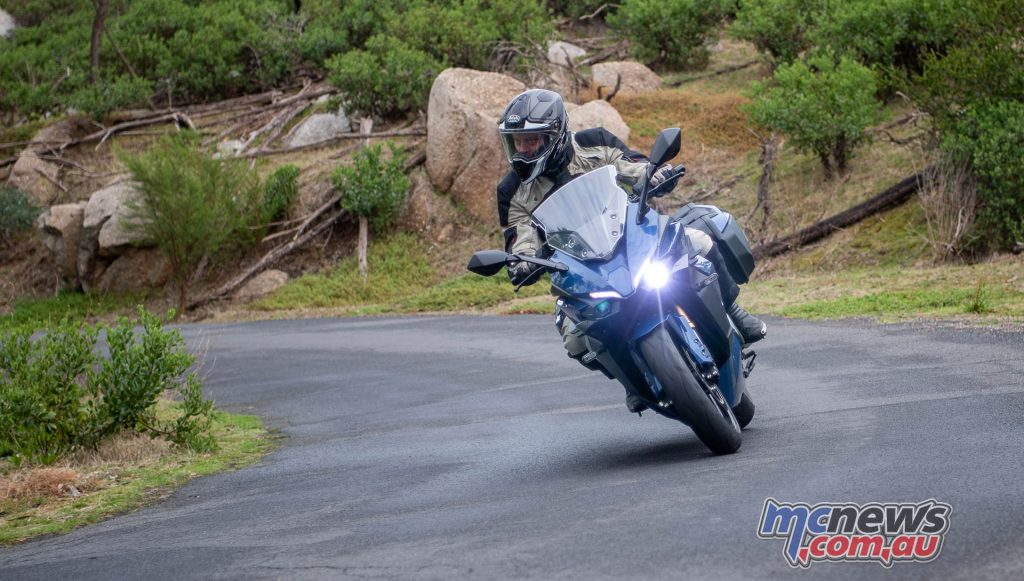
Those minor gripes aside, the GT Panorama (yes it’s named after a certain iconic Mountain in Bathurst) is a very pleasant place to spend some time. The panniers are well made, easy to use and just as easy to remove. Which you will want to, if you commute on it. 15 seconds per side and they’re sitting on the floor and then filtering in between traffic is green lit again. Noice.
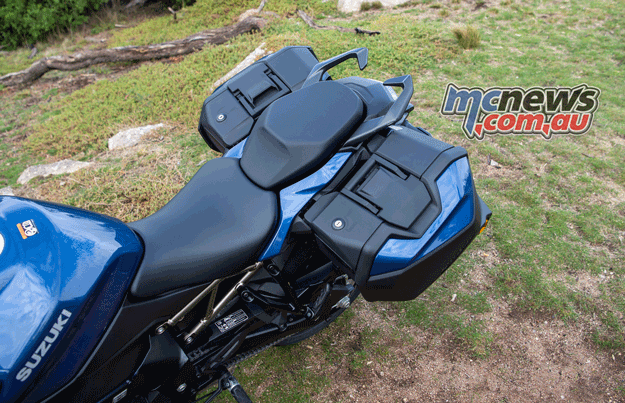
It’s really a consummate all-rounder. As a commuter, that comfortable high bar seating position means your eyes sit nice and high for great visibility and easy blind spot checks. Out of town on the highway it’s equally as pleasant and will eat up miles with a thirst for distance. And do it with ease and comfort whether solo or two-up.

From a performance perspective, while I only had a fleeting chance amongst gloomy skies and damp roads to start exploring the sporting limits, my impression was that it responded well to being ridden aggressively. As in – the more I moved my weight forward and down into a typical sport riding style, the better it felt. Steering is quick and it’s very eager to tip into a corner. Surprisingly so in fact.
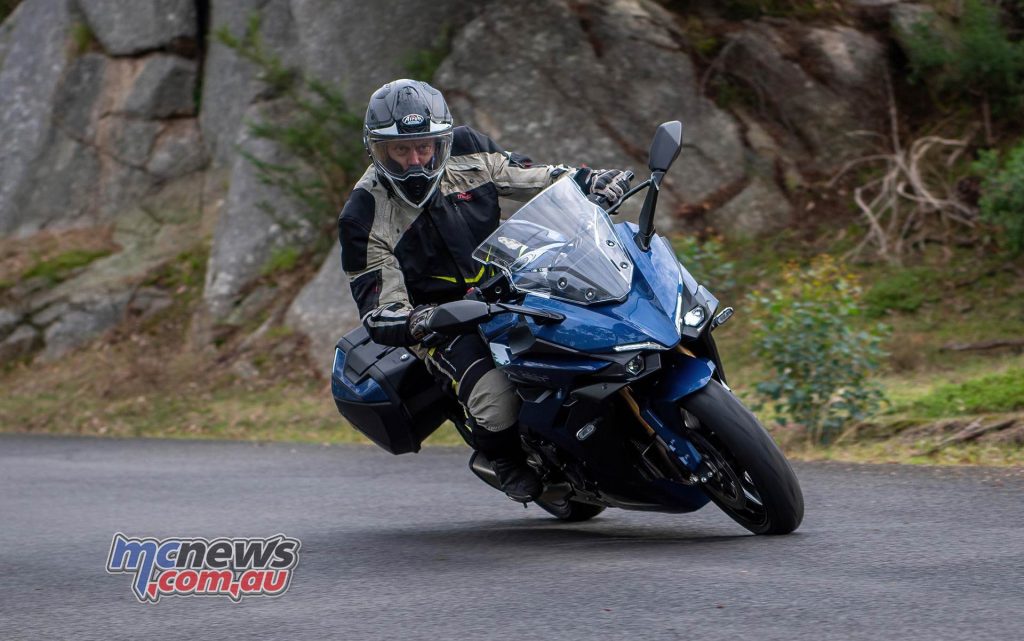
The suspension is probably a little firm in terms of out of the box settings, moreso the rear, and I’d probably have ended up backing both ends of a smidgen with more time. It is a much better starting point than when something feels soft, squishy and under-damped, and it likely would become a little more compliant with more kilometres on the odometer.
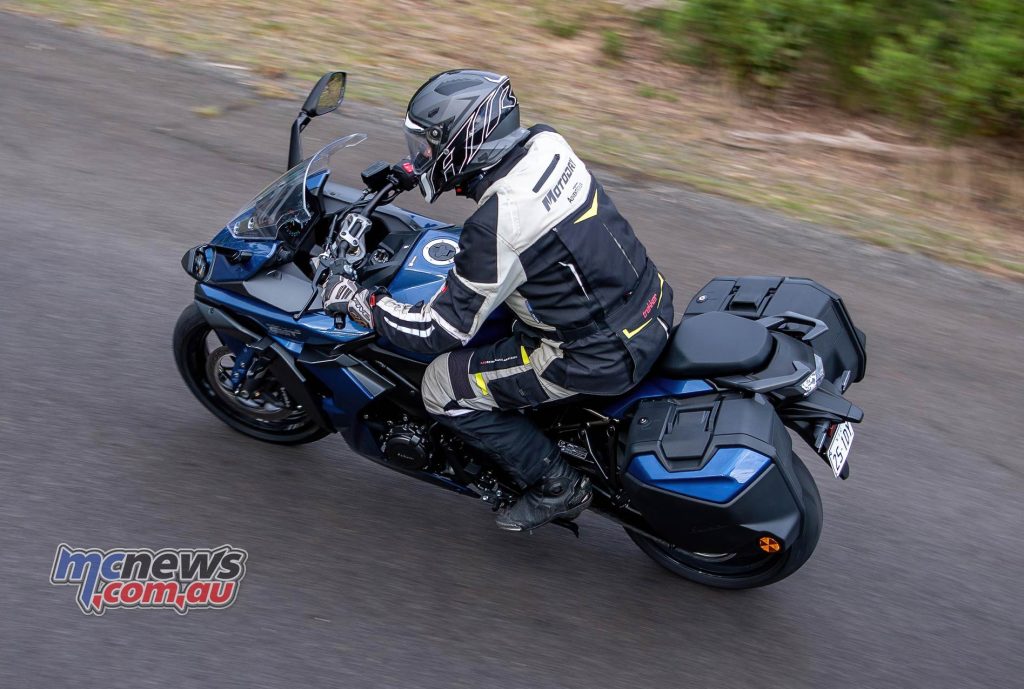
The front did feel fairly lively hitting ripples at speed when cranked over. Make no mistake though – it’s deceptively quick when you want it to be. It’s probably just as quick as an early Gixxer thou on the road. Just a lot easier to ride and more comfortable…
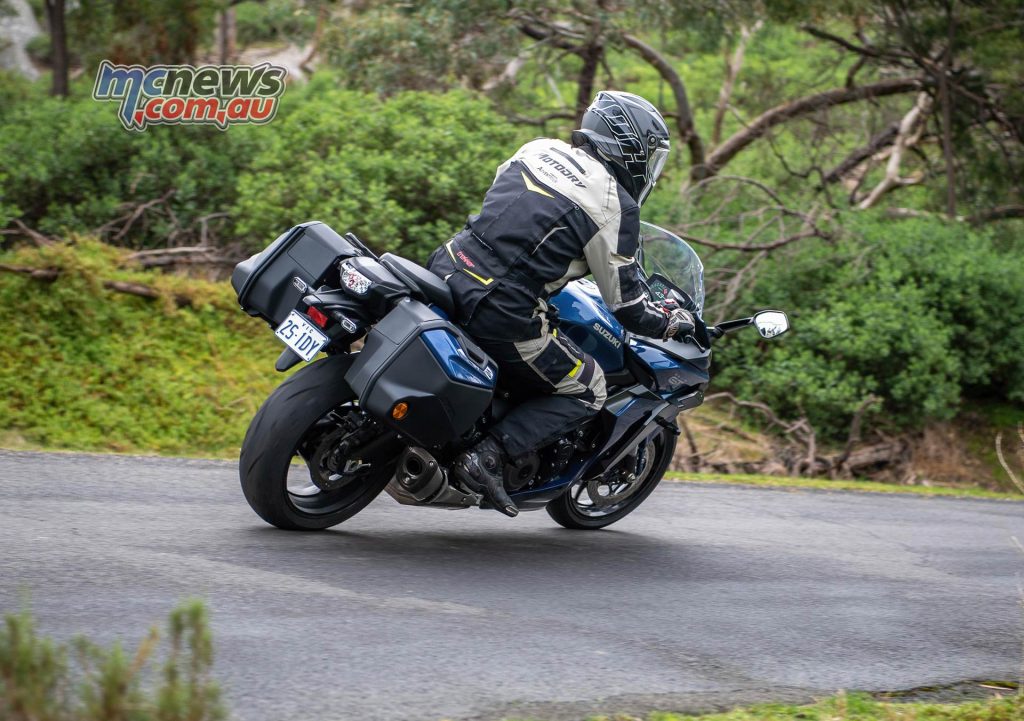
So where does that leave us? Well, I rate it. Even though I didn’t have it long enough to get it fully dialled in, I think the GT will tick a lot of boxes for a lot of riders. And it turns out I’m not the only one that thinks so… as Suzuki have sold out of their first shipment already. Maybe there’s life left in the Sports-Tourer segment yet. I hope so.
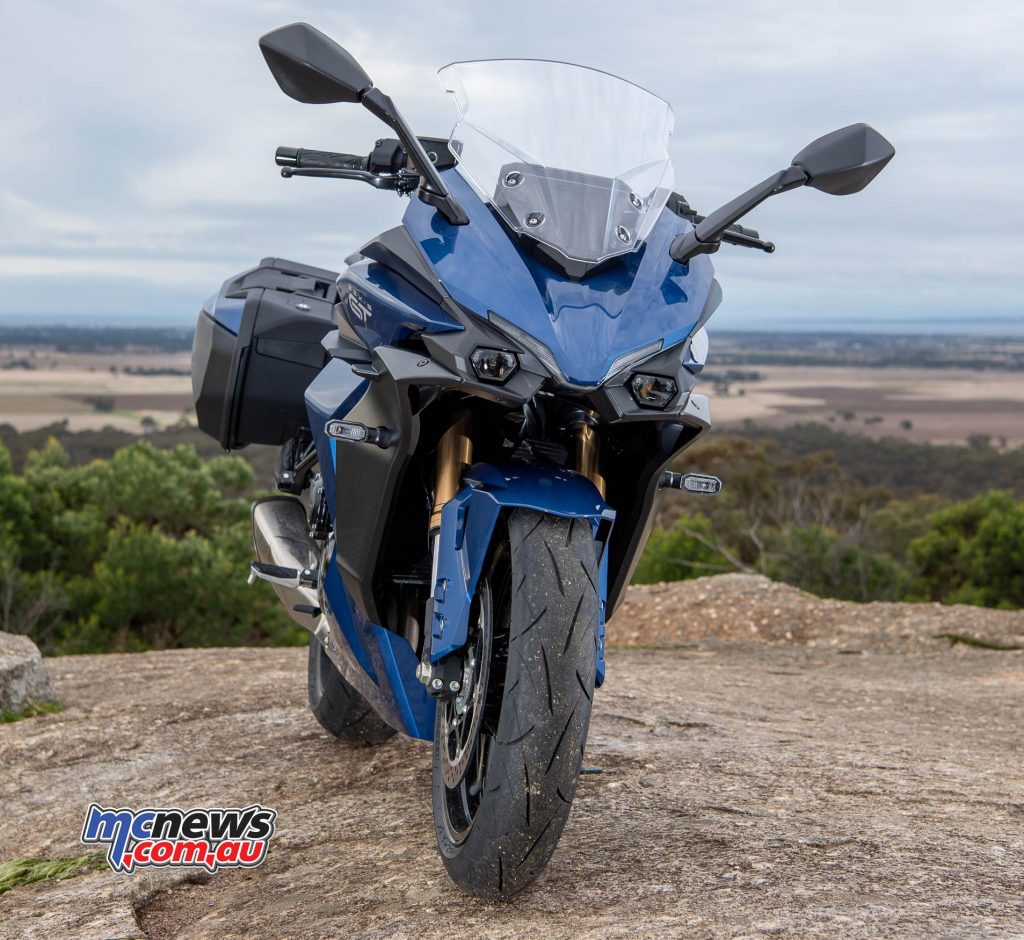
The GT gives the impression that it will last forever but Suzuki also back the machine with a three-year warranty for a little extra peace of mind. At $20,590 Ride Away it makes a pretty good case for itself.
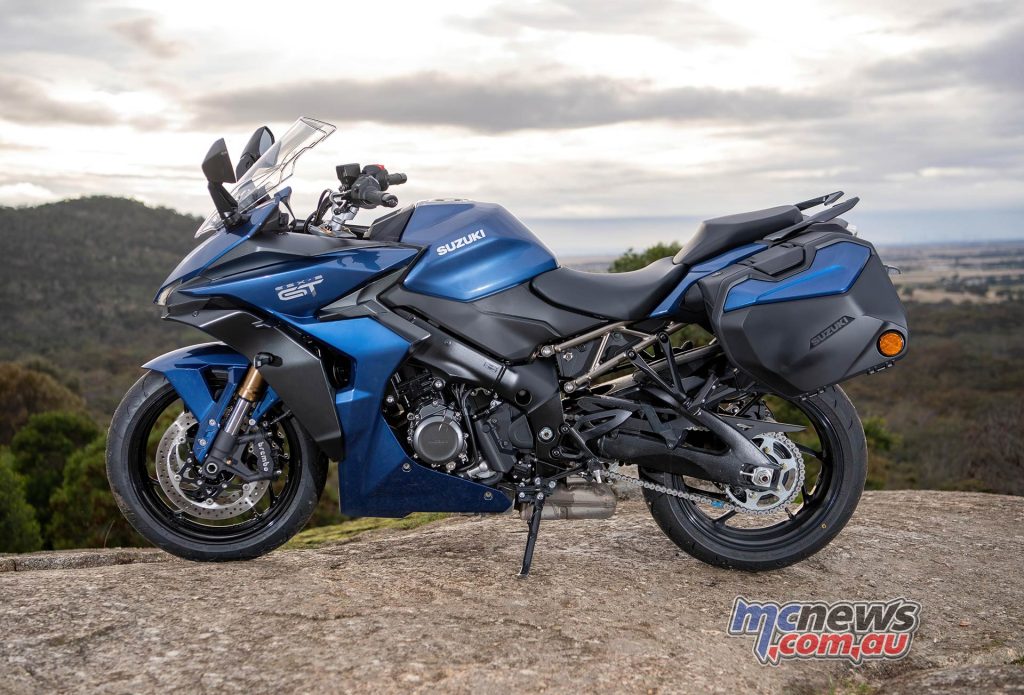
Suzuki GSX-S1000GT Review
I like the Suzuki Panorama because…
- Lovely smooth driveline – that engine is a delight
- Not bad on the retinas either, nicely styled
- Panniers and pillion/luggage accommodation seems well considered
I’d like the Suzuki Panorama more if…
- The headlights need to throw a wider beam
- Dash design and switch gear need some love
- Why no heated grips as standard on a quasi tourer?
- My feet did notice some high frequency vibes through the pegs
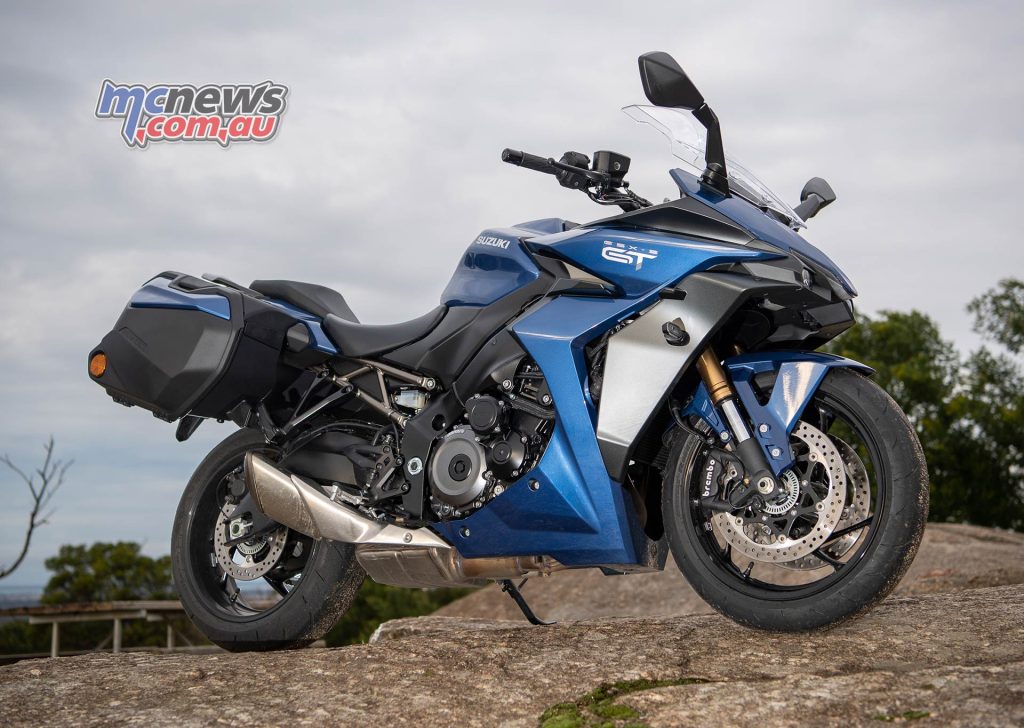
Suzuki GSX-S 1000 GT Panorama Specifications
| Specifications | |
| Engine | 999cc, In-line four-cylinder, liquid-cooled, DOHC |
| Transmission | 6-Speed constant mesh with back-torque-limiting clutch |
| Front Suspension | 43mm KYB inverted forks with adjustable compression, rebound and spring preload |
| Rear Suspension | Link type, KYB shock with adjustable rebound damping and spring preload |
| Front Brakes | Brembo Monobloc Radial-mount 4-piston calipers, dual 310 mm floating discs with ABS |
| Rear Brakes | Nissin single-piston caliper, 220 mm disc with ABS |
| L x W x H | 2140 x 825 x 1215 mm |
| Wheelbase | 1460 mm |
| Seat Height | 810 mm |
| Fuel Capacity | 19 Litres |
| Wet Weight | 226Kg *Excludes Side Case Set |
| Warranty | Two years, unlimited kilometres |
| RRP | $20,590 Ride Away |























